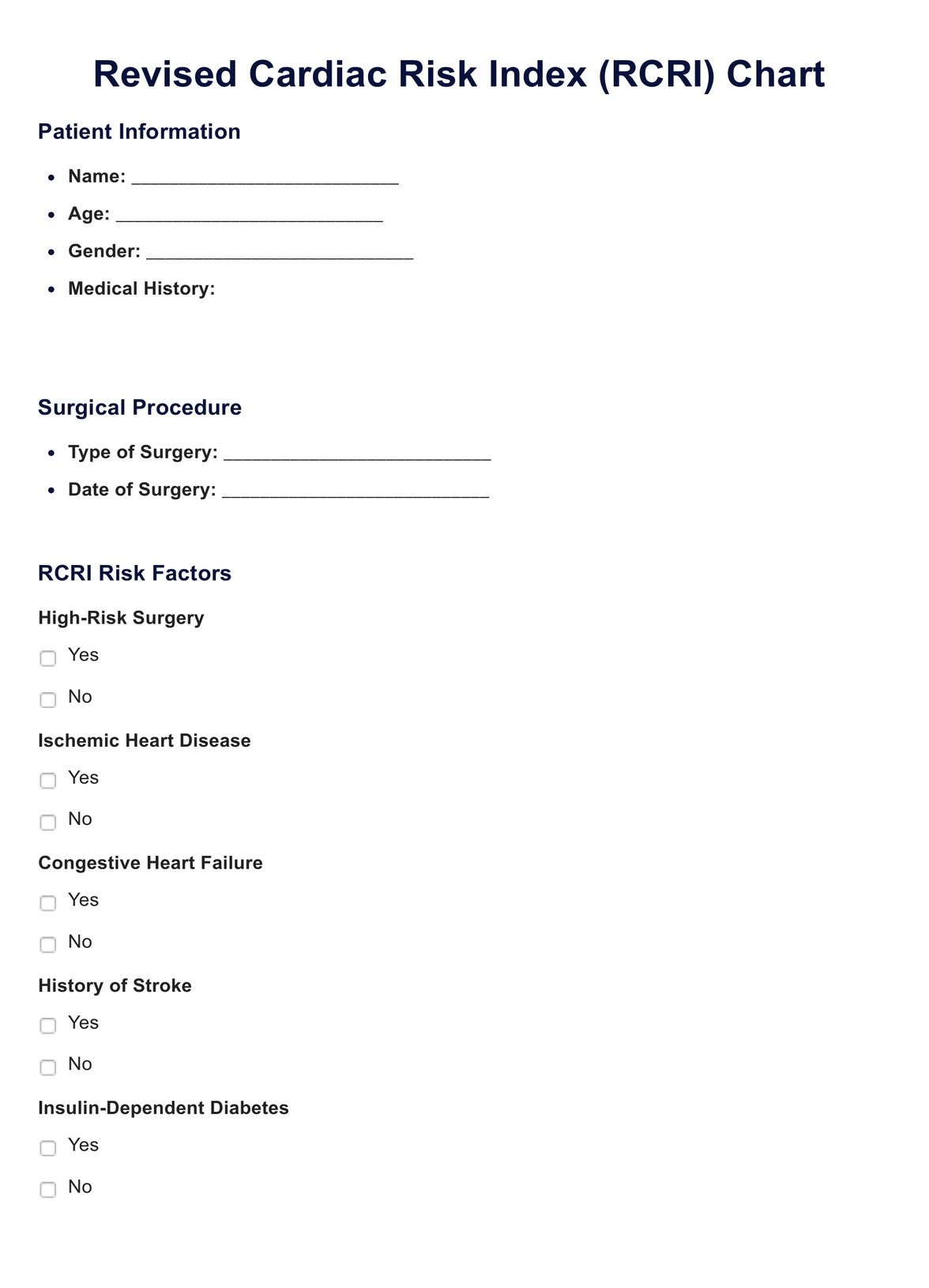Healthcare practitioners, including surgeons, anesthesiologists, and perioperative teams, typically request RCRI charts to assess cardiac risk in patients undergoing non-cardiac surgeries.

Revised Cardiac Risk Index
Optimize preoperative care with our Revised Cardiac Risk Index Chart—tailored assessments and recommendations for personalized risk stratification.
Revised Cardiac Risk Index Template
Commonly asked questions
RCRI charts are used during preoperative assessments to evaluate the risk of cardiovascular events associated with non-cardiac surgeries. They guide decision-making and personalized care planning.
Healthcare professionals utilize RCRI charts to generate a cumulative risk score by inputting patient data, including surgery type and relevant medical history. The score helps stratify patients into low, intermediate, or high-risk categories, guiding tailored interventions.
EHR and practice management software
Get started for free
*No credit card required
Free
$0/usd
Unlimited clients
Telehealth
1GB of storage
Client portal text
Automated billing and online payments











